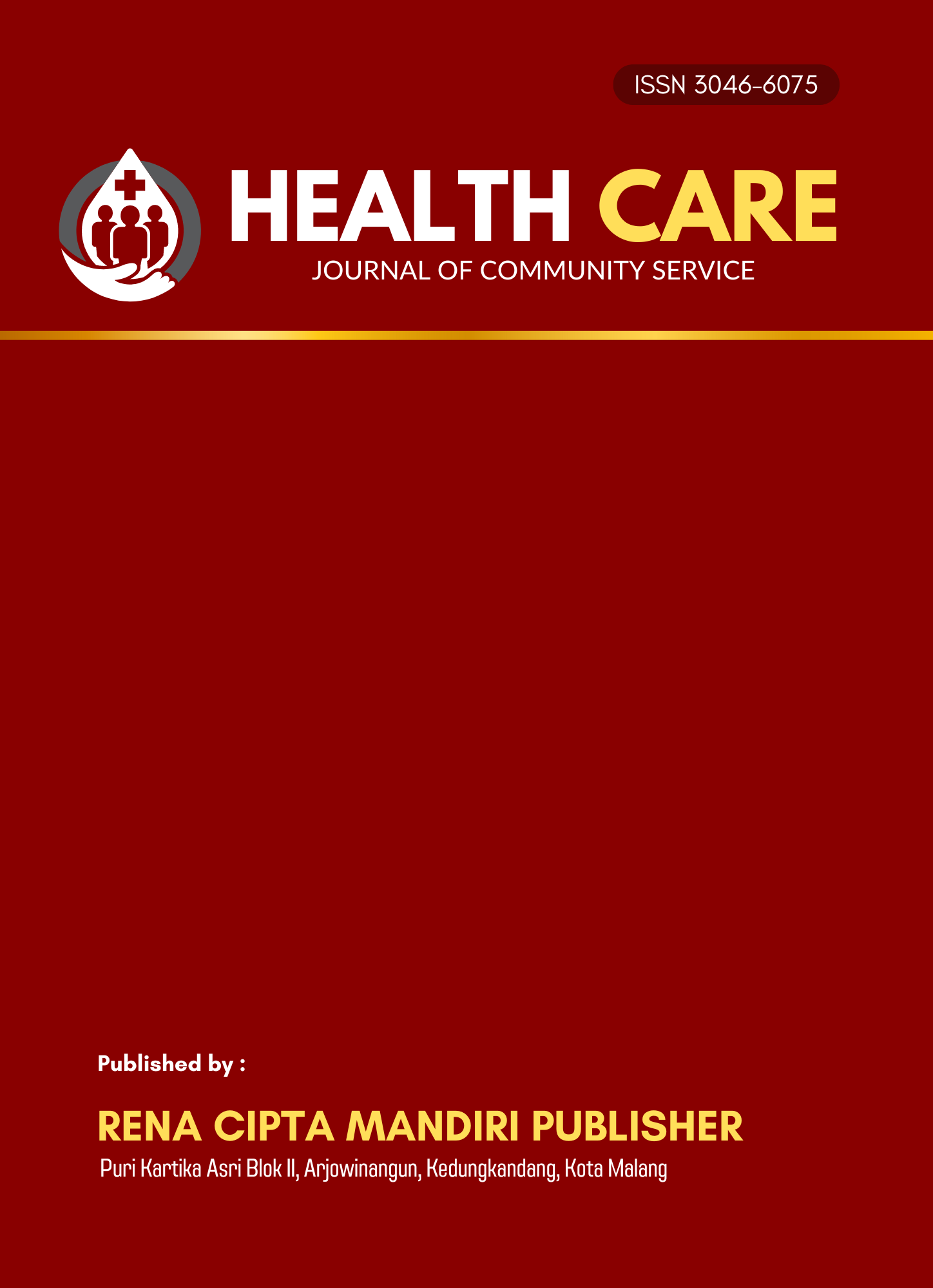Peningkatan Perilaku Hidup Bersih dan Sehat (PHBS) sebagai Upaya Pencegahan Stunting melalui Kegiatan Edukasi di SD Negeri Tunfeu 2 Kabupaten Nekamese
DOI:
https://doi.org/10.62354/healthcare.v3i2.114Keywords:
stunted, clean and healthy behavior, elementary schoolAbstract
Stunting is a chronic nutritional problem that poses a major challenge to the development of quality human resources. The condition is not only influenced by inadequate nutritional intake, but also by environmental and behavioral factors. One of the factors that contribute to stunting is the low level of Clean and Healthy Living Behavior (PHBS), especially the habit of washing hands properly. Previous studies confirm that proper handwashing behavior, as part of Clean and Healthy Living Behavior (PHBS), has a significant correlation with reducing stunting. In addition to nutritional interventions, stunting prevention also requires changes in community behavior (PHBS) through effective education. The purpose of this community service activity is to increase elementary school students' knowledge about PHBS as an effort to prevent stunting. The implementation method includes educational counseling, discussion, six-step hand washing simulation, and evaluation through pre-test and post-test. The results of the activity showed an increase in participants' knowledge, where students with good knowledge increased by 73%, and students with poor knowledge decreased to 7%. In addition, students' hand washing practice skills also showed improvement. PHBS education carried out from an early age has proven to be effective in shaping hygienic behavior and supporting efforts to reduce the prevalence of stunting in the future.
Downloads
References
[1] Kementerian Kesehatan Republik Indonesia, “Profil Kesehatan Indonesia 2023,” Jakarta: Kementerian Kesehatan Republik Indonesia, 2023.
[2] Kementerian Kesehatan Republik Indonesia, “Survei Kesehatan Indonesia Tahun 2023,” Jakarta: Kementerian Kesehatan Republik Indonesia, 2024.
[3] WHO, UNICEF, W. Bank, "Levels and trends in: Joint child malnutrition estimates," 2023. [Online]. Available: https://www.who.int/data/gho/data/themes/topics/joint-child-malnutrition-estimates-unicef-who-wb. [Accessed 21 04 2025].
[4] N. N. Ilma, H. Salimo, and E. P. Pamungkasari, “Prevalence and Path Analysis on the Effects of Diarrhea and Life Course Determinants on Stunting in Children Under Two Years of Age in Kupang, East Nusa Tenggara,” Journal of Maternal and Child Health, vol. 4, no. 4, pp. 230–241, 2019, doi: 10.26911/thejmch.2019.04.04.02
[5] Arifuddin A, Yuli P, Rosa AS, Fahira Nur DW, Eka N, Hidayanti D, “Epidemiological Model Of Stunting Determinants In Indonesia.” Jurnal Kesehatan Tadulako Vol. 9 No. 2, Mei 2023
[6] Belay, Eleni et al. “Prevalence and determinants of pre-adolescent (5-14 years) acute and chronic undernutrition in Lay Armachiho District, Ethiopia.” International journal for equity in health vol. 18,1 137. 2 Sep. 2019, doi:10.1186/s12939-019-1041-z.
[7] Hasan, Md Mehedi et al. “Association of access to water, sanitation and handwashing facilities with undernutrition of children below 5 years of age in Bangladesh: evidence from two population-based, nationally representative surveys.” BMJ open vol. 13,6 e065330. 1 Jun. 2023, doi:10.1136/bmjopen-2022-065330
[8] Aliya N, Khubaibah L, Masyruroh R, Wasi’A, Syarifuddin M, Hidayati S, “Peningkatan Perilaku Hidup Bersih dan Sehat (PHBS)Sebagai Intervensi Pencegahan Kejadian Stunting di SDN Rojopolo 04,” Jurnal Pengabdian kepada Masyarakat Nusantara (JPkMN), vol. 3, pp. 1936–1944, 2023.
[9] Adzura M, Fathmawati F, Yulia Y, Lingkungan JK, Kesehatan P, Pontianak K. “Hubungan Sanitasi, Air Bersih Dan Mencuci Tangan Dengan Kejadian Stunting Pada Balita Di Indonesia Relationship of Sanitation, Clean Water, and Handwashing with Stunting in Children in Indonesia. Vol. 21.
[10] E. Chattopadhyay, Aparajita et al. “WASH practices and its association with nutritional status of adolescent girls in poverty pockets of eastern India.” BMC women's health vol. 19,1 89. 5 Jul. 2019, doi:10.1186/s12905-019-0787-1
[11] C. S. Kwami, S. Godfrey, H. Gavilan, M. Lakhanpaul, and P. Parikh, “Water, sanitation, and hygiene: Linkages with stunting in rural Ethiopia,” Int J Environ Res Public Health, vol. 16, no. 20, Oct. 2019, doi: 10.3390/ijerph16203793
[12] Dinas Kesehatan Kabupaten Kupang, “Profil Kesehatan Kabupaten Kupang Tahun 2023,” Kabupaten Kupang: Dinas Kesehatan Kabupaten Kupang, 2023.
[13] Kementerian Kesehatan Republik Indonesia, “Cuci Tangan Pakai Sabun,” Jakarta: Kementerian Kesehatan Republik Indonesia
[14] Cumming O, and Cairncross S, “Can water, sanitation and hygiene help eliminate stunting? Current evidence and policy implications,” May 01, 2016, Blackwell Publishing Ltd. doi: 10.1111/mcn.12258.
Downloads
Published
Issue
Section
License
Copyright (c) 2025 Nabilah Nurul Ilma, Odi L. Namangdjabar, Hasri Yulianti, Nurlaelah Al-Tadom, Adriana M.S. Boimau

This work is licensed under a Creative Commons Attribution-NonCommercial-ShareAlike 4.0 International License.
-
Open Data Commons Attribution License, http://www.opendatacommons.org/licenses/by/1.0/ (default)
-
Creative Commons CC-Zero Waiver, http://creativecommons.org/publicdomain/zero/1.0/
-
Open Data Commons Public Domain Dedication and Licence, http://www.opendatacommons.org/licenses/pddl/1-0/















